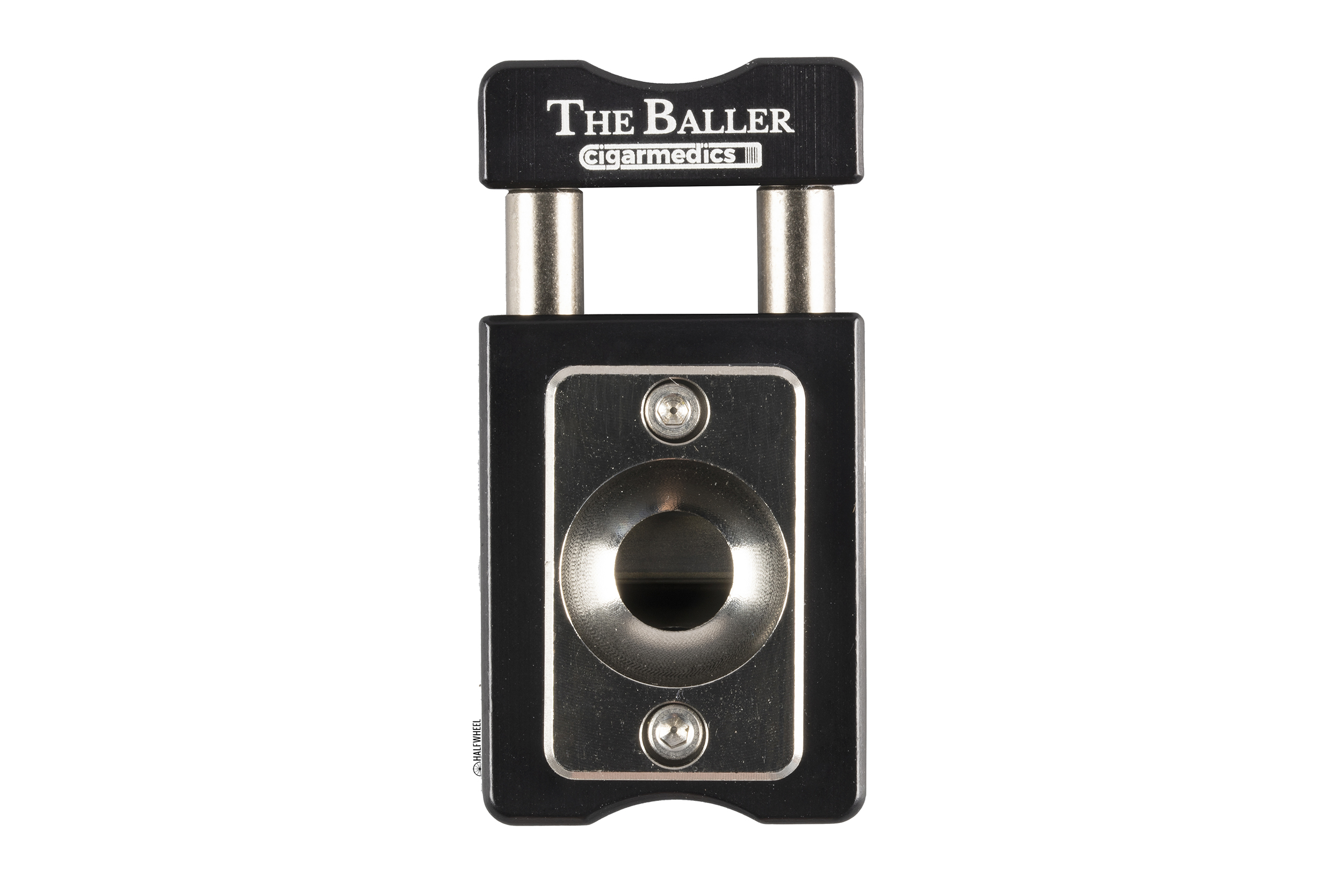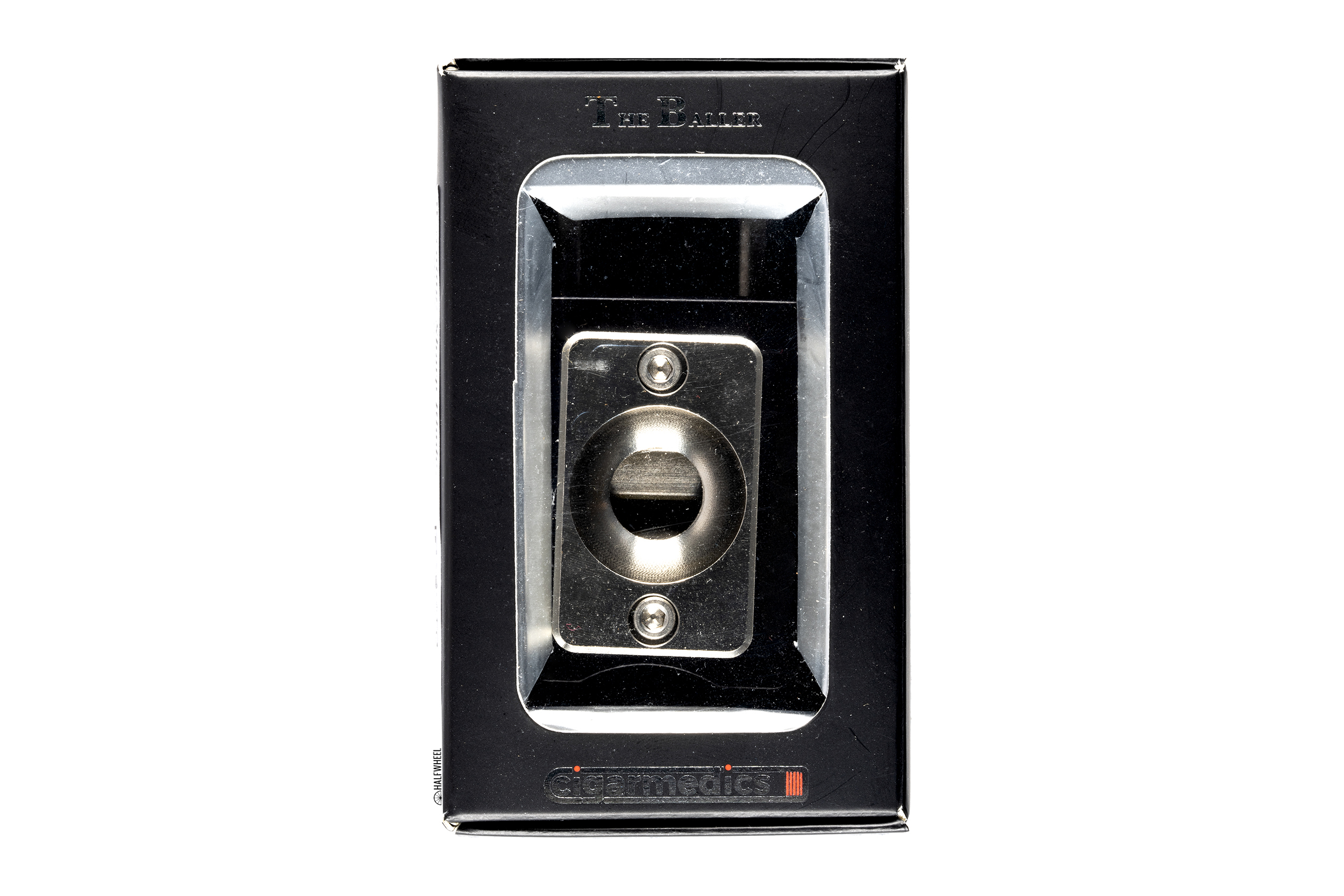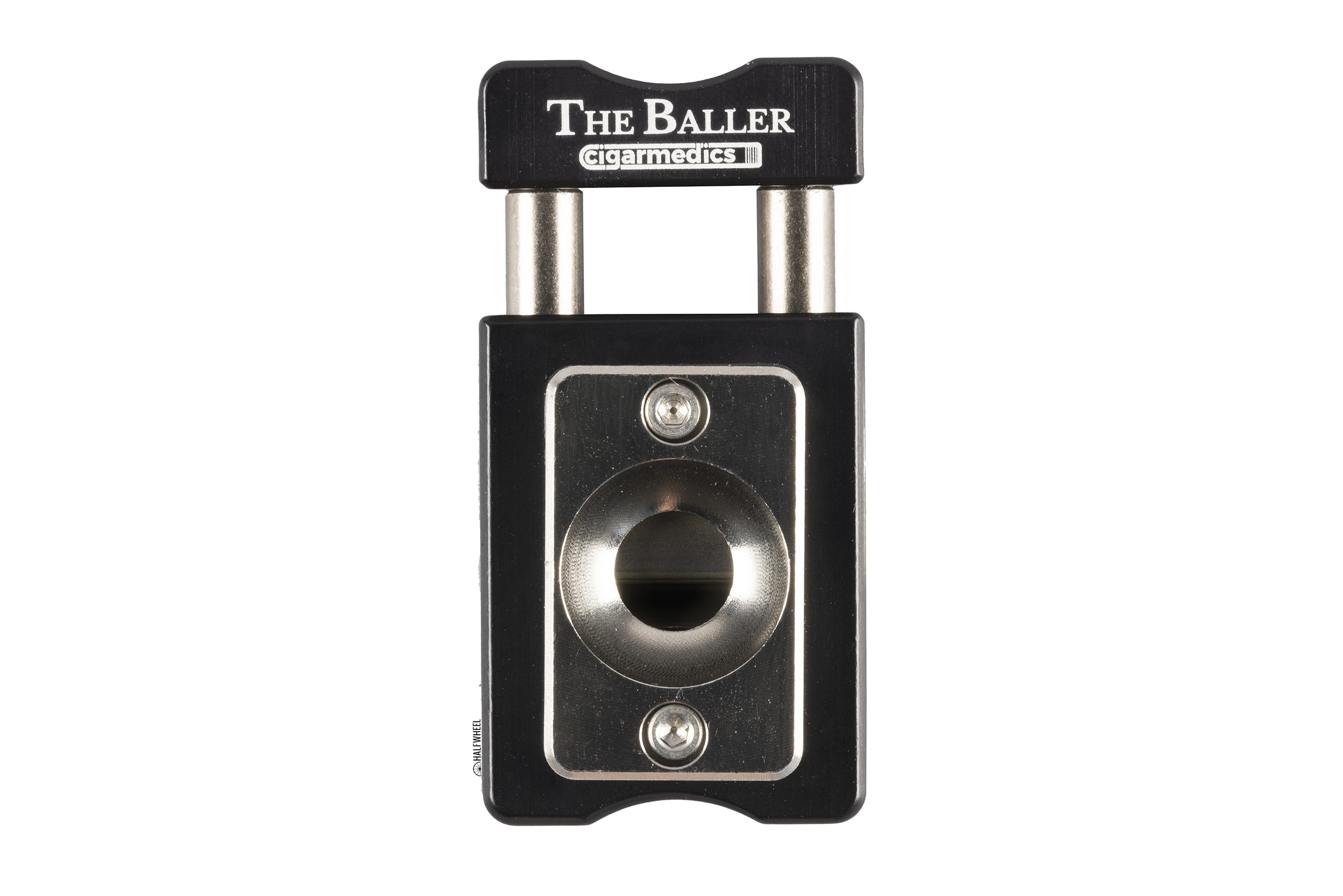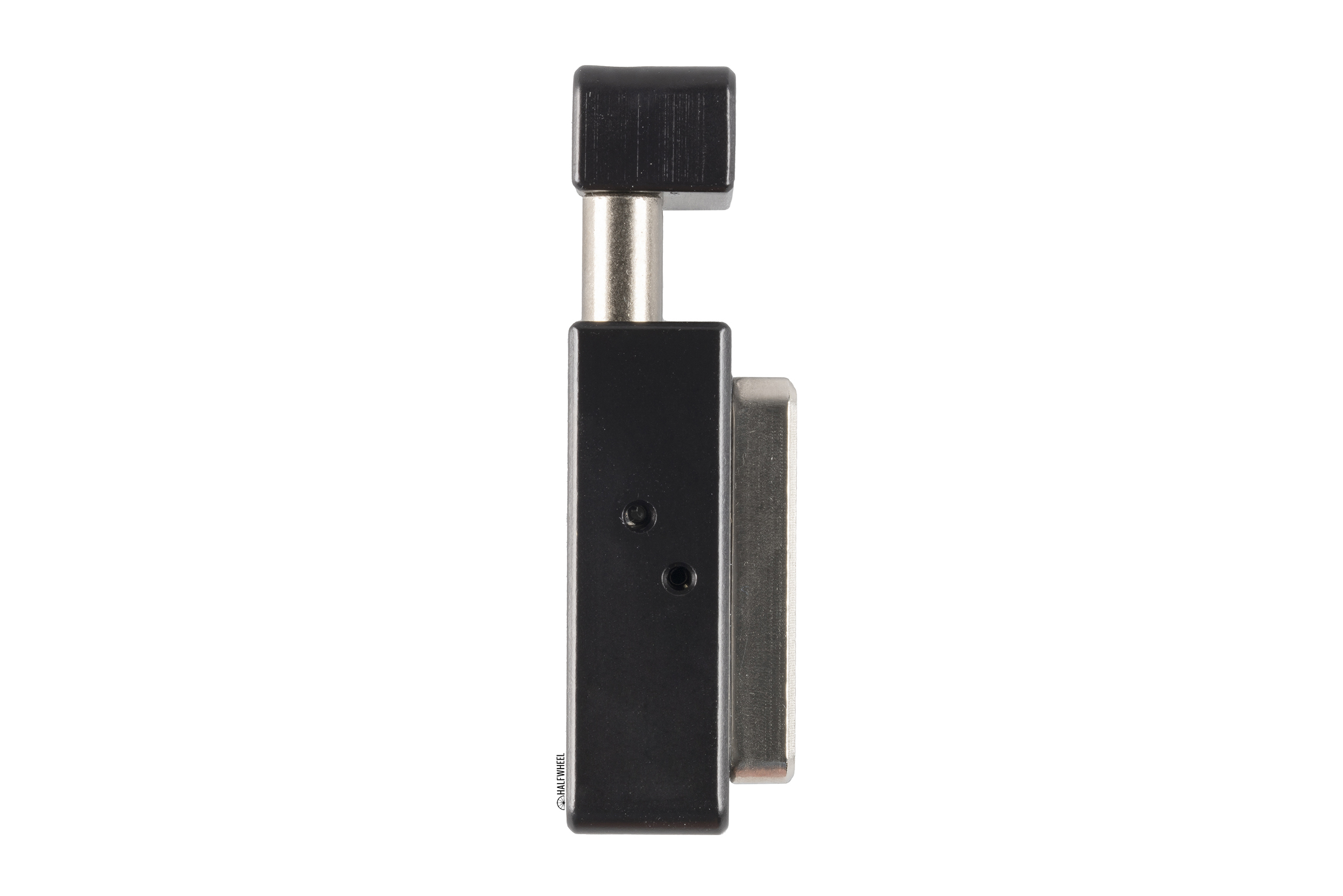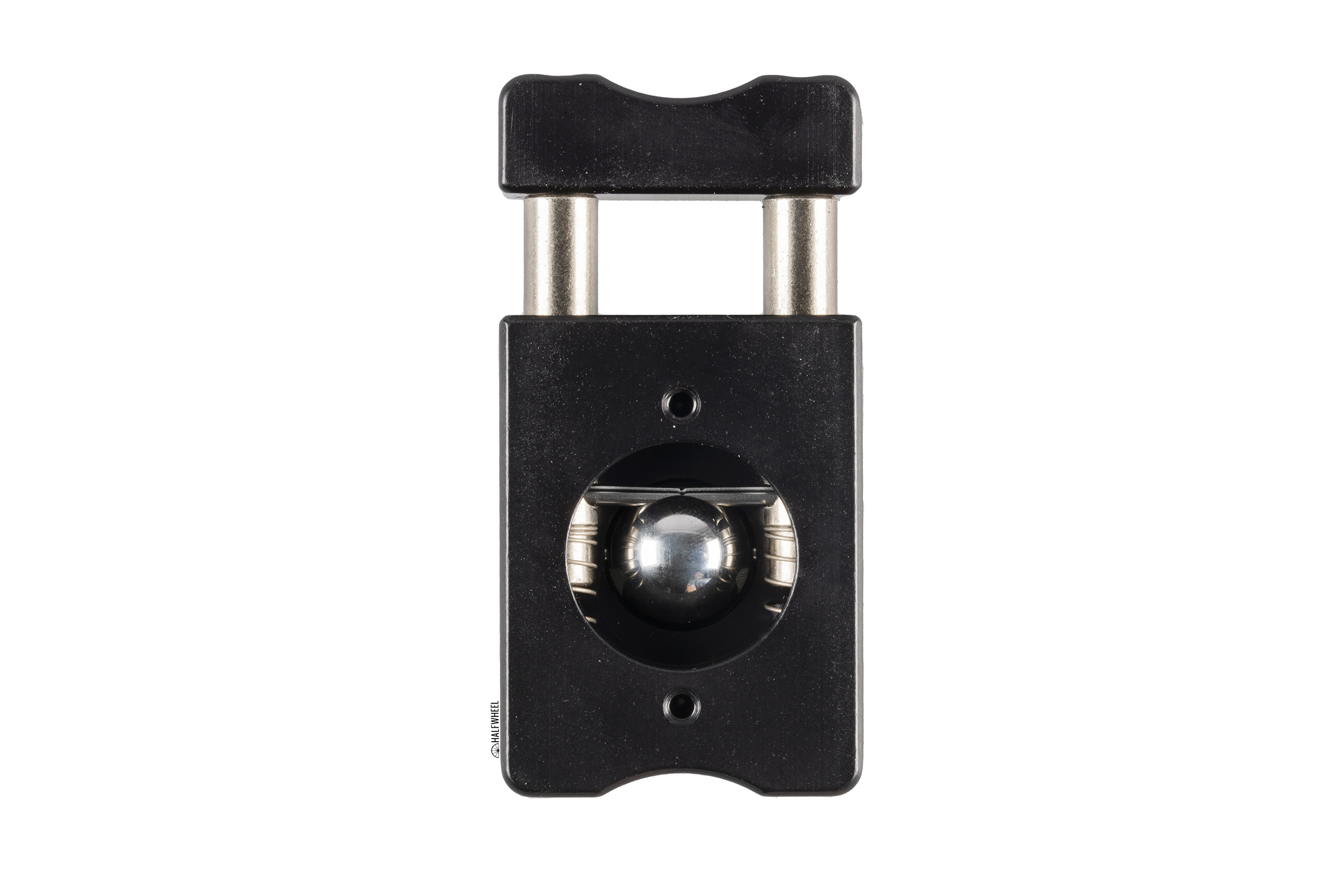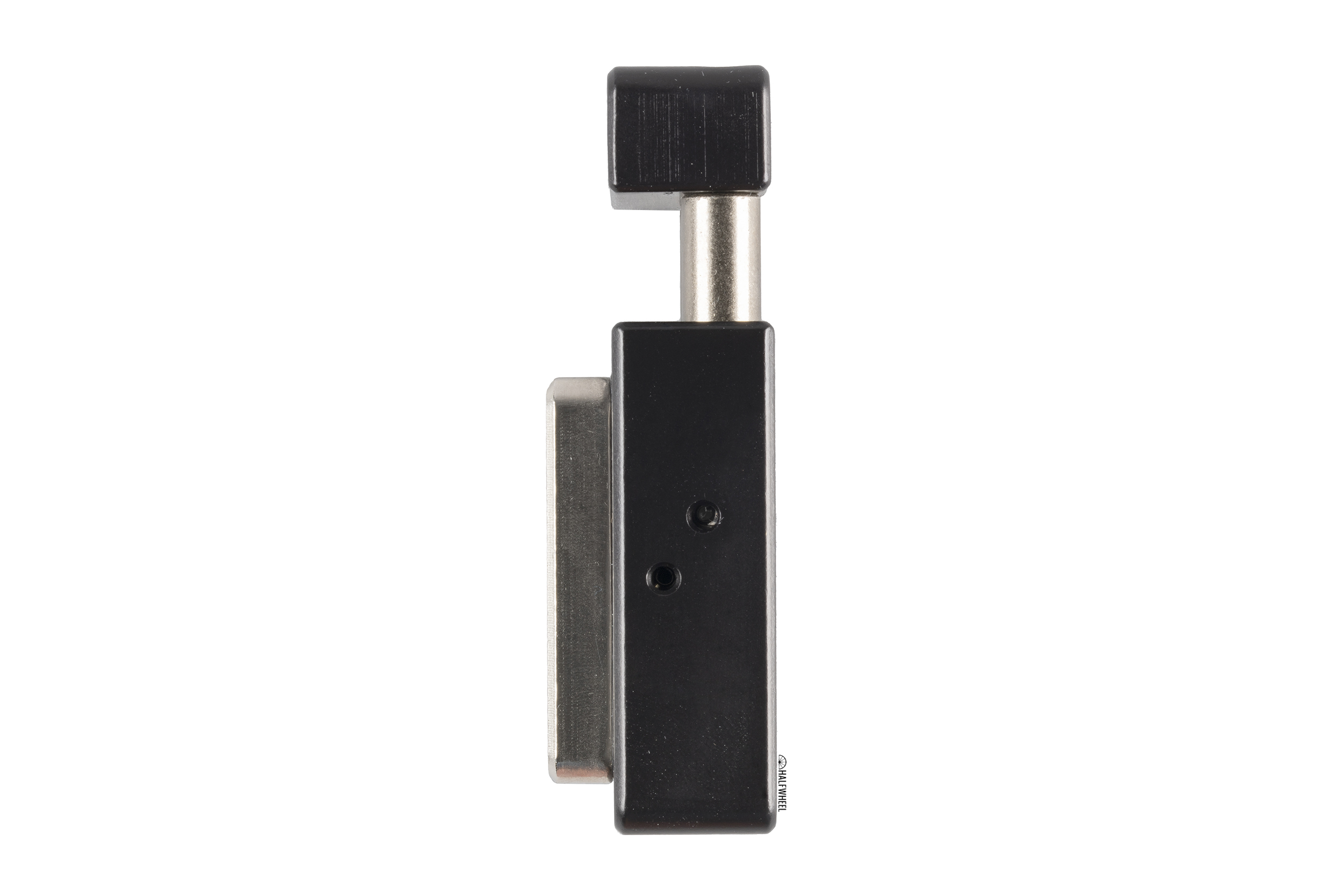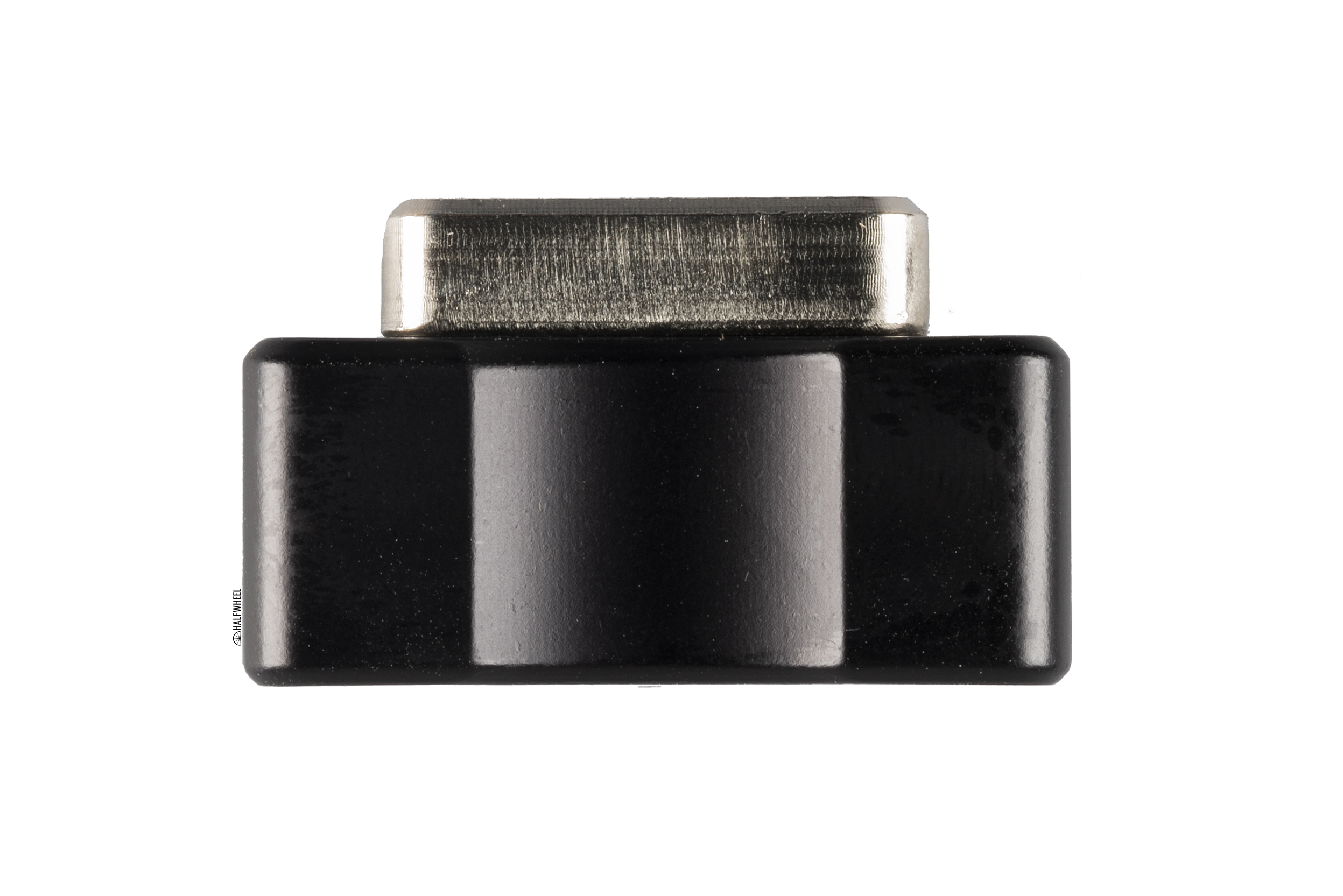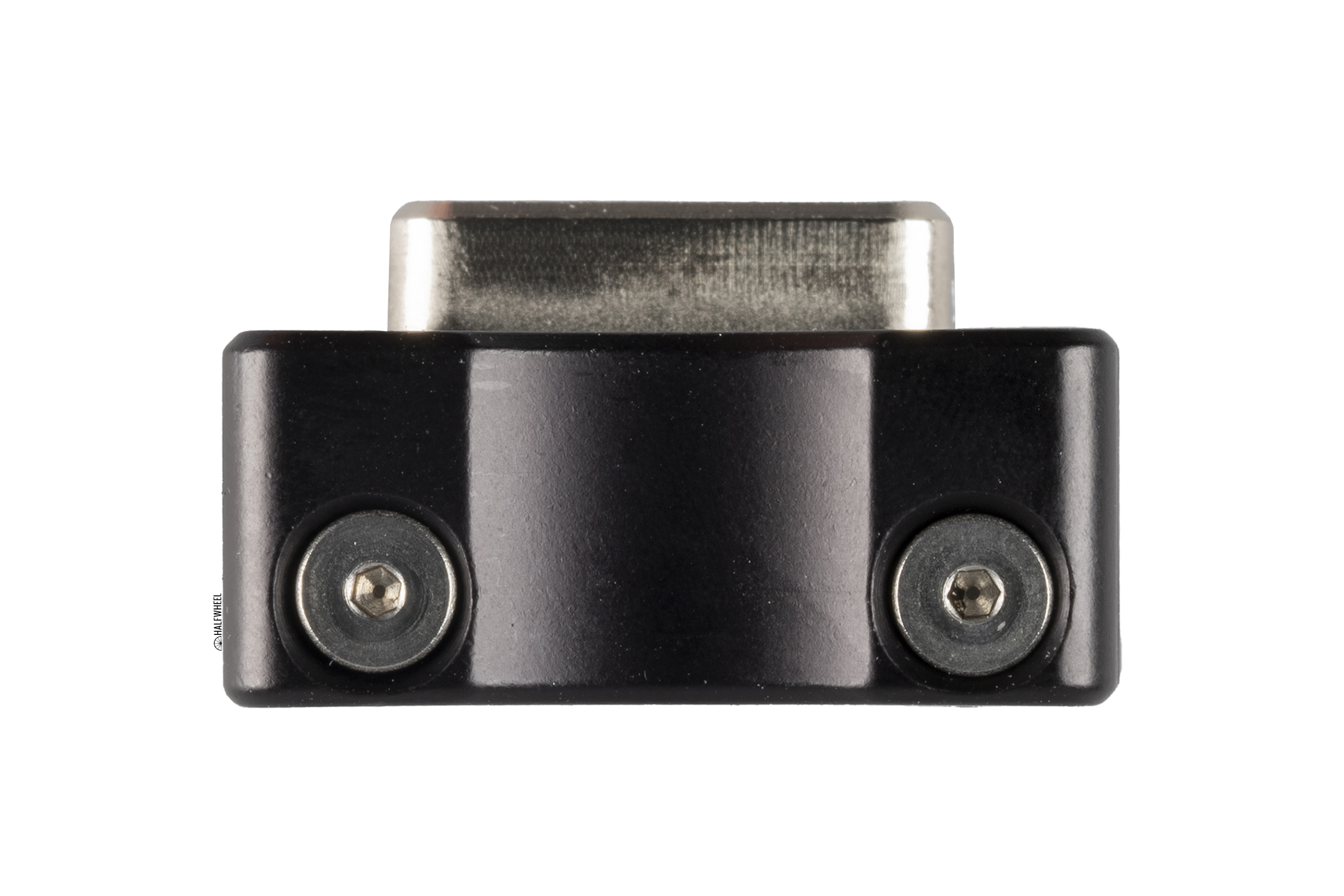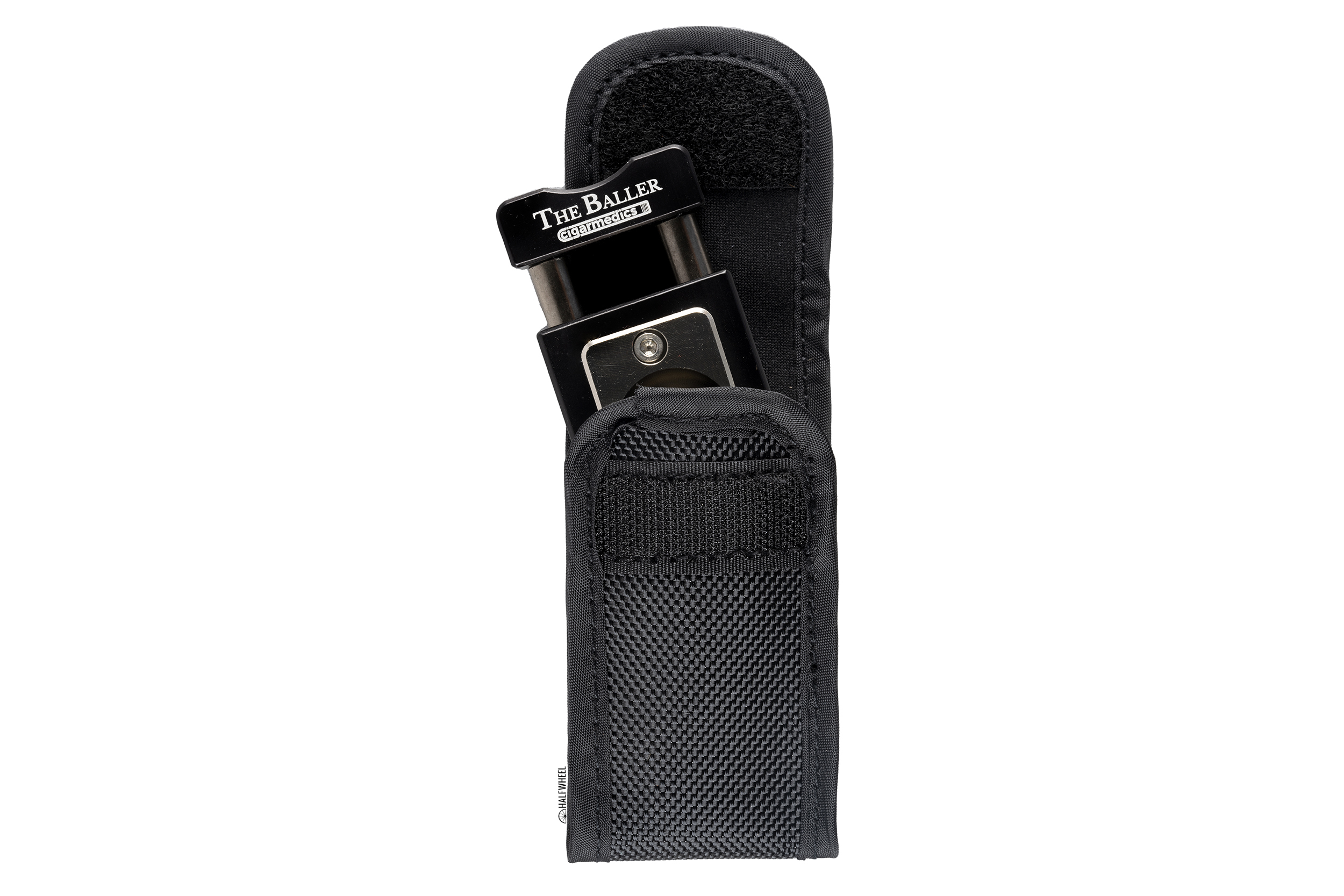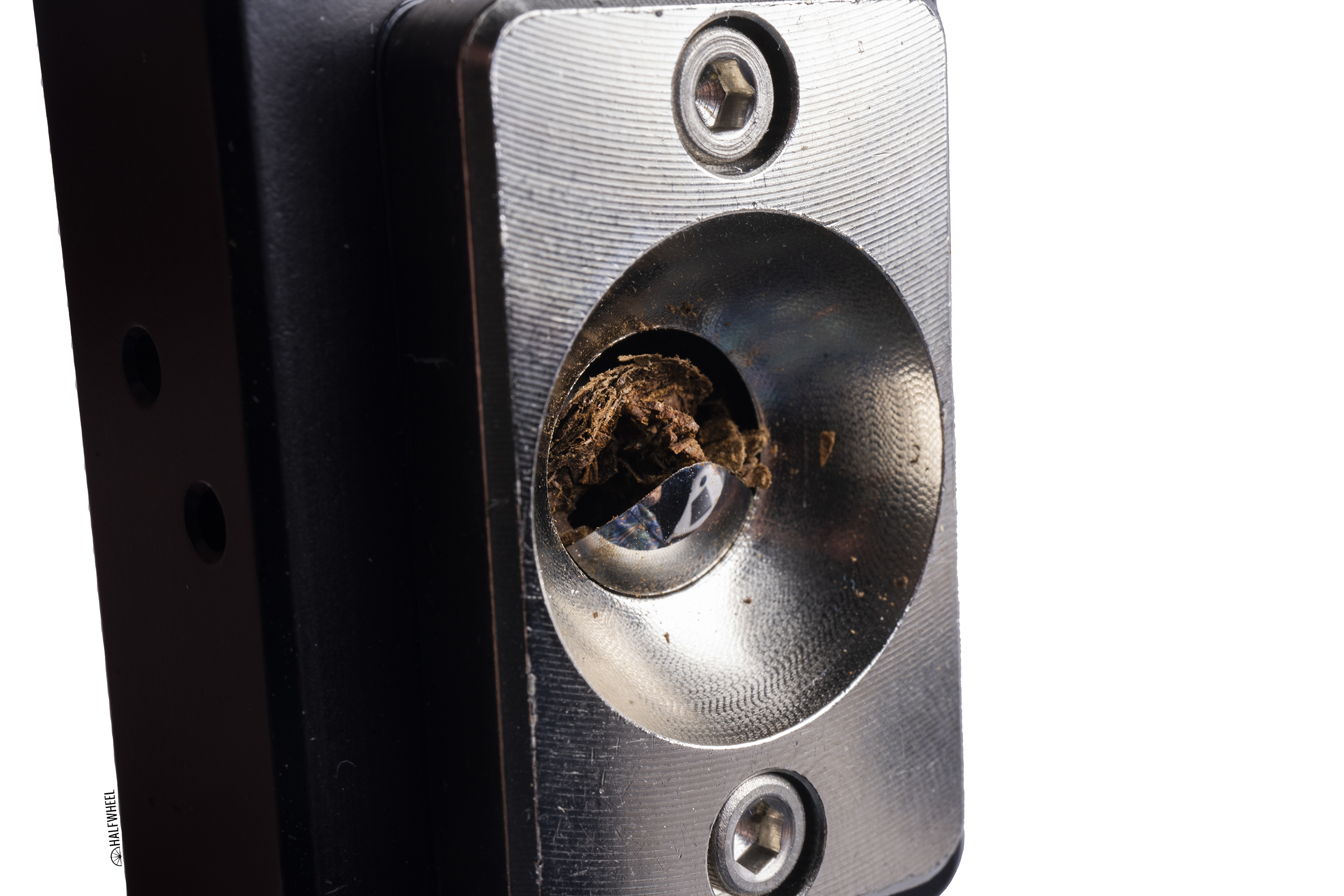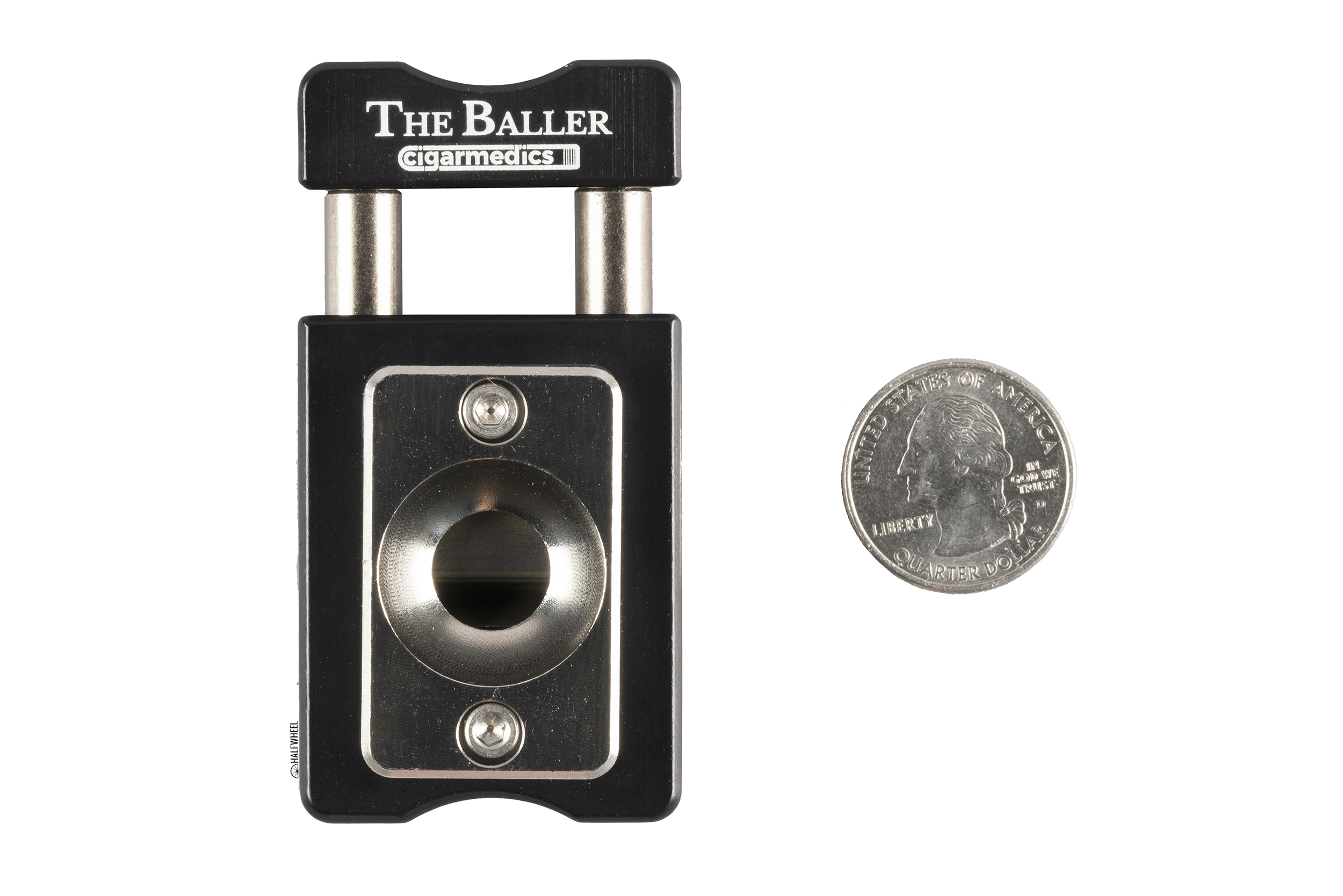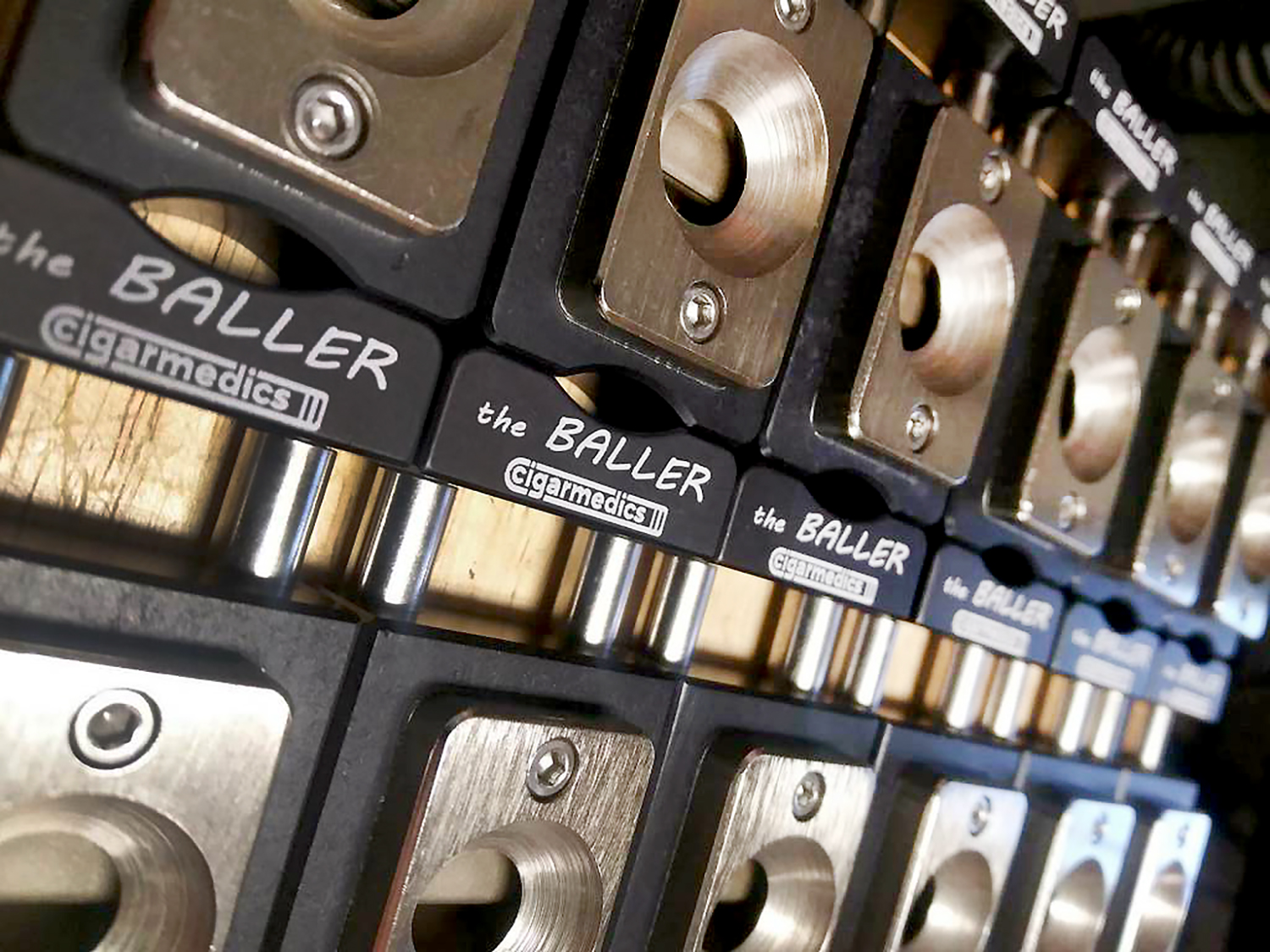Founded by brothers Giovanni and Tommaso Camilleri along with their cousin Luigi Lucente, CigarMedics is an accessory company perhaps best known for its HumidiMeter, a device that is designed to measure the moisture content within the filler tobaccos inside the cigar.
During the 2022 PCA Convention & Trade Show, CigarMedics debuted a new method of cutting cigars in a product named The Baller. While the majority of cutters on the market cut cigars in one of three ways—straight cut, punch cut and v-cut—The Baller incorporates a brand new cutting method—it’s similar to a melon baller—that took about two years to perfect, according to Luigi Lucente, product development engineer at CigarMedics.
The Baller is assembled by a company in Illinois out of components made in a small family-owned shop in Pennsylvania.
WHAT IS IT?
According to the company, The Baller is a cigar cutter designed to combine aspects of both a punch cutter and a v-cutter. The body of the cutter is made of anodized aluminum and nickel-plated steel, while the “ball” of the cutter —i.e. the actual blade—is composed of hardened stainless steel.
In terms of physical specifications, The Baller measures 1.62 inches tall when it is open—that number decreases to 1.18 inches when closed—.85 inches wide and .43 inches thick. The whole cutter weighs a total of 5.2 ounces.
HOW MUCH DOES IT COST?
The MSRP of The Baller is $125, but you can find it for sale for about $100 if you spend some time looking at sites online.
HOW DOES IT WORK?
Although the operation of The Baller is fairly straightforward, the result is not: basically, the cutter works by scooping a 12mm circular indention out of the cap of a cigar, much like a shallow melon baller. This is made possible by the unique blade, which is manufactured in the shape of a curved and sharpened oval. In my mind, the cut is more reminiscent of a v-cut as opposed to a punch, albeit designed to leave behind an intact cap that the latter method excels at.
The cutter works basically like a v-cutter: insert the cap of the cigar into the opening of the cutter and then firmly press down the top part until the cutter is fully closed. This action forces the blade to ascend from the bottom of the opening and cut through the cap. The blade halts when it comes to the end of the track so the plunger is all the way down at this point. Once the top part is released, the plunger rises again until the opening is clear and the blade is back inside the housing of the cutter. The tobacco of the cap that was just cut remains inside of the opening until the cutter is turned over or when the cutter gets specifically tapped to release the tobacco.
After using The Baller to cut just about every cigar I smoked during a four-week period, I encountered two main issues. First, unlike a punch cutter or a v-cutter, there is no way for me to visually judge exactly where the cap is going to be cut, as the sides of the cutter block any effort to view it.
Second, due to the action of the blade—which ascends from the bottom instead of descending from the top—the top edge of the cigar is pushed upward until it hits the top of the opening of the cutter. This action squeezes the top of the cigar between the blade and the top of the cutter opening until the blade actually forces itself into the tobacco. There were a number of times when this action resulted in obvious damage to the entire top end of the cigar in various forms, including small cracks around the edge of the cap opening that had just been cut. Oftentimes, this was nothing more than a minor annoyance—albeit one that should not have happened—but a few times, the cracks that were caused by that crushing action spread from the top of the cigar into the main part of the cigar, which caused the tobacco around the cap to unravel as I smoked the cigar.
THE GOOD
- It Is A Unique Cut — It is not often that a new way of cutting cigars is introduced, not to mention one that produces usable results. When there was no damage to the cigar, the cuts that I got from the cutter were excellent and really did impress me with a combination of a deeper indention similar to what you get from a (shallow) v-cut and—when it works correctly—the targeting of a punch cutter that leaves the entire cap intact. As to the actual draw, when The Baller worked like it should, the draw was noticeably more open than I get with most punch cutters but a bit tighter than I am used to getting with a deep v-cut.
- It Can Actually Be Used On Torpedos — While you are going to have a rough time determining how to cut a torpedo with a punch, it is possible to cut that vitola with The Baller, although it does require a bit more time and effort, as I did have to cut each torpedo twice to get a good enough draw to actually smoke the cigar.
- It Is Built Like A Tank — Seriously, I am pretty sure I could hammer a nail with this thing and then cut a cigar with no issues. It looks extremely solid and feels like it is made of very durable materials.
- There Is A Cigar Rest Built Into the Top (Sort Of) — I am honestly unsure if the indention on the top of the cutter plunger is meant to act as a cigar rest—and it does take a little bit of effort to get the cigar balanced just right—but it works fine in a pinch.
THE BAD
- Getting Clean Cuts Is Not A Given — For roughly a third of the cigars I cut with The Baller, I had issues ranging from minor cracks around the edges of the round cutout opening in the tobacco that was made by the blade to more significant damage to the tobacco that makes up the entire top end of the cigar.
- It Is Awkward To Use — While it may seem fairly simple, the process of using The Baller takes a surprising amount of time and effort to come even close to perfecting. Even after using it almost exclusively for a month, it takes me way too long to try and put the cap into the opening just so, lining everything up as best I can to make sure the blade would cut into the cap evenly—a difficult procedure since I can’t really see where the blade is going to actually be cutting as noted above—pushing the plunger down and making sure all of the leftover pieces of the cap make it out of the cutter. After that month of constant use, I am more comfortable when it comes to pushing the blade through the cigar to minimize damage, but on the flip side I am still horrible at accurately anticipating where the cut will be in the top of the cigar.
- Lots And Lots of Tobacco Pieces Left Over — On just about every cut I made there were quite a few pieces of tobacco left over that fell everywhere. This seems to me to be a result of the unique cutting process, as there are more little bits left over after using this cutter than any other style of cutter I have reviewed recently. In addition,
- It is Bulky & Heavy — The cutter weighs in at 149 grams—158 grams when inside the pouch; for context, it weighs just 20 grams less than my fairly full wallet, which comes in at 169 grams. The weight, combined with the thickness of the cutter and the need for it to use a case means this cutter is not one you are going to carry around for any length of time without noticing it
- No Locking Mechanism On Plunger — This may be just because it is the first release of this particular cutter, but not having a way to lock down the plunger is a major omission. Sure, the included case is designed to hold the cutter with the plunger up instead of down, but if you want to carry this cutter around outside of the case, that plunger is going to be up.
THE COMPETITION
I have been reviewing cigar cutters for close to 10 years and I can safely say that I have not seen another cutter that cuts cigars in even close to the same manner as The Baller. With that said, I would have to say that an obvious competitor to The Baller would be the Colibri Quasar Punch ($59). Of course, there are some differences beyond just the price: the Quasar actually includes three different punch sizes—7mm, 9mm and 12mm—compared to just the 12mm cut of The Baller. And while the cuts are not nearly as interesting as those from The Baller, the Quasar is quite a bit lighter making it easy to carry around in your pocket if needed.
Additional Competitors
- Porsche Design P’3626 ($164.25) — If you can’t have another product exactly like The Baller that combines a v-cut and a punch into one style of cut, why not have a product that includes both ways of cutting your cigar? This cutter not only has an extremely capable punch cutter—albeit only 7mm—but also an excellent v-cut and straight cut, all in a product that comes in at about two-thirds the weight of The Baller.
- Visol Marcel Wedge Cigar Cutter ($50) — While I have not reviewed this cutter yet, its design includes a v-cut and a 9mm punch, but comes in at a third of the price of The Baller while also weighing significantly less.
- The Spencer Cigar Cutter V Cut and Punch ($32.49) — Another combination v-cutter and punch cutter, the Spencer Cigar Cutter comes in at a price that is quite a bit less expensive than The Baller. Note: I have not reviewed this cutter yet.
SHOULD YOU BUY IT?
No.
The Baller is just about everything I love in a cutter: it is unique, it is well-made, and it has a cool story behind it. Unfortunately, I say “just about everything” because there is one major, reoccurring issue with The Baller: the action of the blade when cutting the cigar results in damaged caps quite a bit of the time. Sometimes that damage was extremely minor—say, the round cutout was not totally clean and there were cracks around the edge—and sometimes the issue was more significant, specifically damage to the tobacco that makes up the cap of the cigar, leading to that part of the leaf becoming unraveled. In the end, The Baller is one of the most interesting products I have seen in a while, but it does not give any noticeably different results compared to a good punch or v-cut cutter when it comes to actually draw air through a cigar, while also being significantly more awkward to use and having more incidents of damaged caps.
Editor’s Note: The cutter used for this review was purchased by halfwheel. Previously, CigarMedics gave halfwheel a separate cutter.

